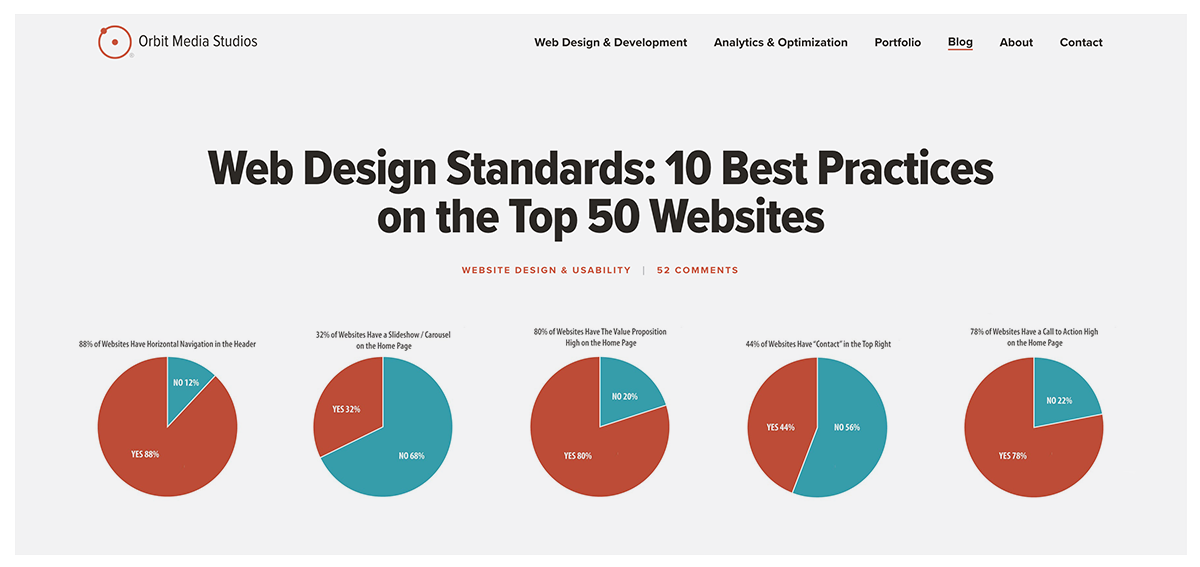Marketing Tactics: 10 Effective Ways to Reach Your Customers
Get new customers, increase brand loyalty, and drive sales by finding the right marketing tactics for your business.
Identity marketing is a new marketing tactic that helps you acquire your best customers with personalized offers that celebrate their identities.
What are Marketing Tactics?
The best marketing tactics definition is simply this: any action that marketers take to accomplish their big-picture goals of acquiring and retaining customers. Examples of marketing tactics include publishing blog articles, posting on social media, managing paid ads, sending direct mail, and hosting webinars.
Marketing Tactics Vs Strategy: What’s the Difference?
If marketing tactics are things you do, then marketing strategy is why you do them.
Your marketing strategy will define your long-term goals (like raising brand awareness or generating quality leads) and—in broad strokes—how you’ll achieve them. So your strategy describes the path forward, and your tactics are the specific steps you’ll take as you move forward.
For example, if your marketing goal is to increase qualified leads by a certain percentage, your strategy may include reaching a new prospective customer group. To reach those new customers, you may decide to publish a whitepaper on a subject those customers are interested in, and then gate it behind a form that requires their email address to download.
To make sure your new customer group sees the whitepaper, you decide to promote it via paid social ads targeted at your new customer group. Publishing and promoting that whitepaper are both tactics that work together to help you execute against your strategy and, ultimately, reach your goal.
Choosing the Right Marketing Strategies and Tactics
The tricky thing about settling on a list of marketing tactics? Tactics are always evolving, and there’s always a new distraction ready to separate your marketing activities from your strategy.
Just a few decades ago, marketers relied on promotional tactics like billboards and print or radio ads to reach their target audiences. In the earlier days of the Internet, companies published hundreds of blog posts shamelessly stuffed with keywords (and not much else) to rank on Google searches.
Today, marketers are navigating how privacy concerns will impact retargeting ads that follow customers around the Internet based on their past behaviors while trying to establish a brand presence on TikTok and Clubhouse.
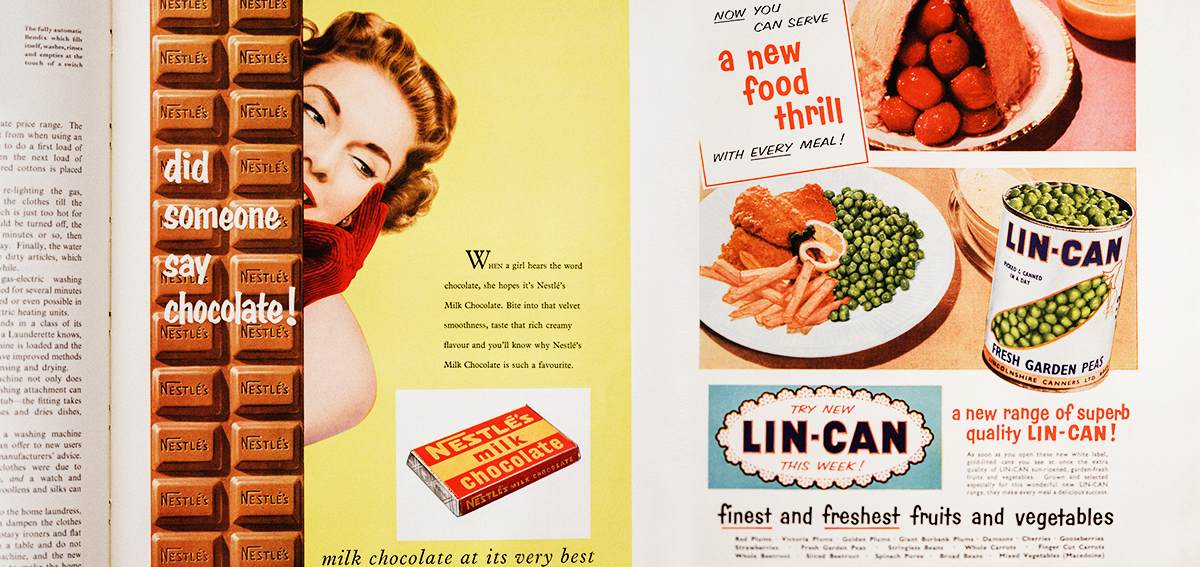
Today’s marketers have to use a much wider range of promotional tactics than the billboards and print ads they created in the past.
If you had endless resources, you could try every new tactic that crosses your LinkedIn feed or inbox. But most of us have to invest our time and energy wisely, so good marketers learn to adopt new tactics that align with their strategy and meet their customers where they are, and ignore the rest.
Is your audience active on the latest social media platform? Great—learn the best practices, give it a try, and measure your outcomes. If the latest tactic doesn’t help you meet your strategic goals, then it’s time to cut your losses and focus on actions that do.
10 Proven Marketing Tactics to Master
So, all that said, here is our curated marketing tactics list: ten marketing tactic examples—and the strategic goals they align with—that we’ve seen produce meaningful results.
1. Advertorials
What it is: Sponsored content that easily blends into editorial publications—think ads in disguise.
What it can do for your brand: Build brand awareness, convey authority, establish thought leadership, reach new customers.
When it’s not a good fit: If you have a small budget, or lack content production resources.
Pro tip: Work with your PR partners or agency to identify solid opportunities with publications that serve your target audience.
Examples: Forbes Council posts, Buzzfeed articles, Tasty.co recipes
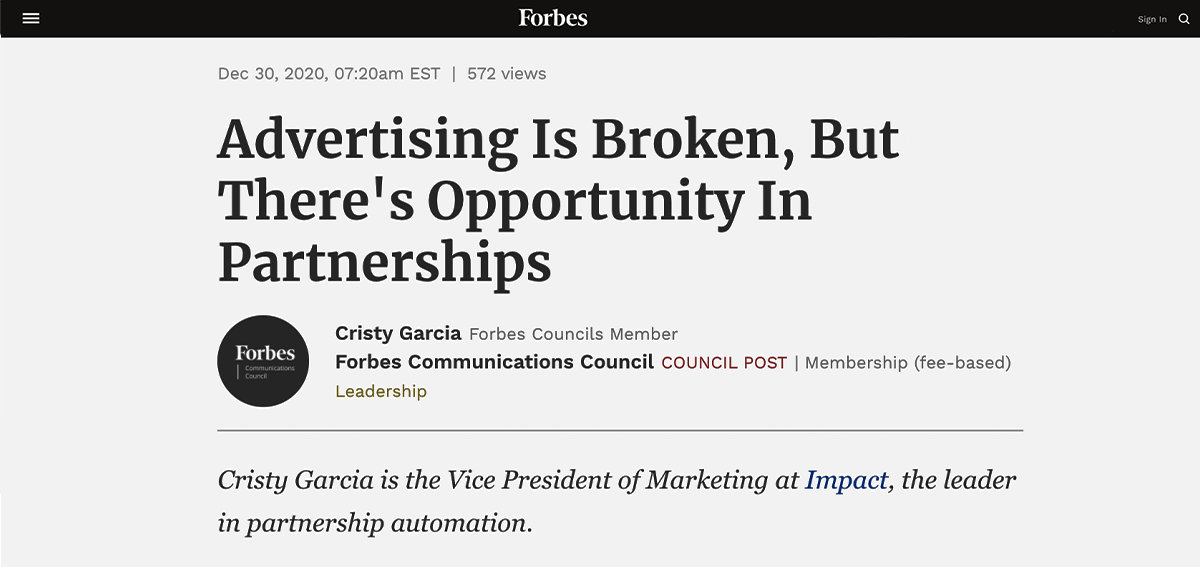
Sponsored articles on websites like Forbes.com can raise brand awareness and establish executive thought leadership.
2. Micro-Influencer Marketing
What it is: Partnering with influential individuals with an engaged following to promote your brand or product
What it can do for your brand: Build brand awareness, acquire new customers, increase brand authority by associating with a trusted figure
When it’s not a good fit: If you have a small budget, or need definitive ROI metrics
Pro tip: Use hashtags to find an influencer who has high engagement (likes or comments) from your target audience—that’s a good indicator they’ve earned trust and respect, which they can pass onto your brand through a partnership
Examples. Instagram posts and giveaways, TikTok ad challenges.
Marketing Tactic Success: Back Market launched a campaign with paid influencers and drove a 33% increase in conversions.
3. Interactive Content
What it is: Tools or widgets your audience can engage with—think calculators or quizzes
What it can do for your brand: Drive website traffic and engagement, lead generation
When it’s not a good fit: If you don’t have resources or budget for development
Pro tip: Don’t reinvent the wheel—consider what existing content you can repurpose as interactive (such as turning a blog post into a quiz or assessment)
Examples: Budget calculators, style/fit quizzes, clickable infographics, technology assessments
Interactive content like this clickable infographic from CEWE can engage, entertain, and educate prospects.
4. Customer Loyalty Programs
What it is: Collect customer data and track behavior, rewarding purchases or interactions with perks, discounts, and giveaways
What it can do for your brand: Improve customer retention, increase customer satisfaction, enrich customer data and understanding, drive sales
When it’s not a good fit: If your customers don’t make recurring purchases
Pro tip: Invest in a digital-first loyalty program to ensure you can collect and use data to personalize customer engagement
Examples: Tiered loyalty programs, point-based programs, personalized rewards programs
5. Original Research
What it is: Conduct and publish original research to support your brand’s value proposition and deliver helpful content to your target audience
What it can do for your brand: Establish brand authority, generate PR/media mentions, drive website traffic, generate leads, support SEO initiatives through building backlinks
When it’s not a good fit: Lack of resources—original research takes time
Pro tip: Design research projects that can be repeated each year, and repackage your research into several formats for sharing across channels (think infographics on social, statistics on landing pages, quotes in sales decks)
Examples: Observational research, survey-based reports
Publishing original research like this observational study from Orbit Media Studios underscores your brand’s authority and value proposition.
6. Referral Campaigns
What it is: Systematically asking your satisfied customers for referrals to family, friends, or colleagues who may be interested in your product or service
What it can do for your brand: Generate leads, acquire new customers
When it’s not a good fit: If your NPS or CSAT scores are low, focus on improving the brand experience for your existing customers before asking for referrals
Pro tip: Layer referral campaigns onto your customer loyalty program to deliver a seamless experience
Examples: Referral codes that offer discounts, referral codes that include contest entries, points-based referral bonuses
Marketing Tactic Success: Comcast used on-campus student ambassadors to promote its student discount and drove a 91% increase in subscriptions.
7. Affiliate Marketing
What it is: Compensating a partner with a commission or fee for sales, leads, or traffic they deliver to your business
What it can do for your brand: Generate leads, increase sales, drive website traffic
When it’s not a good fit: If you’re trying to lower customer acquisition costs (affiliate commissions and fees can get expensive) or want to collect and own your customer data (affiliates usually don’t share data)
Pro tip: Partner with affiliates that already engage with your target audience (much like influencer marketing) and provide them with content and regular product updates to help drive sales or traffic
Examples: Tech affiliate programs, retail affiliate programs
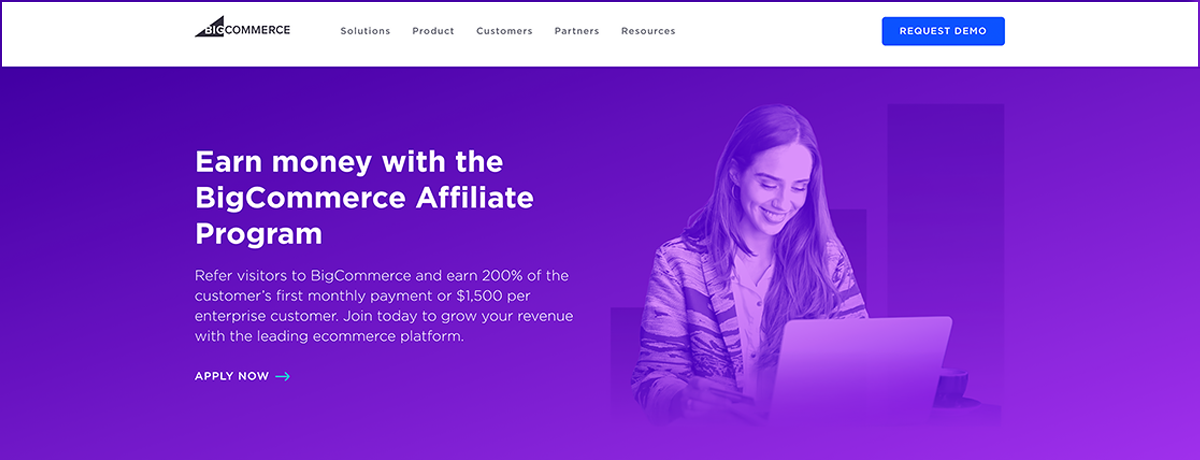
Partnering with affiliate marketers expands your pipeline for leads and sales.
8. User-Generated Content
What it is: Encouraging and leveraging content created by your customers—such as photos, videos, reviews, and more—across your website, social media, and other marketing channels
What it can do for your brand: Establish social trust, drive brand awareness, reduce content creation costs
When it’s not a good fit: If your audience isn’t active on social media, or your product or service isn’t visually compelling
Pro tip: Promote a dedicated hashtag for customers to use when sharing content featuring your product on social media, and share relevant images/videos on specific product pages
Example: Branded Instagram hashtags, sharing holiday-specific UGC, charitable donations for UGC
9. Email Newsletters
What it is: Sending helpful, relevant insights or entertainment directly to your audience’s inbox
What it can do for your brand: Drive sales, generate leads, improve customer engagement and retention
When it’s not a good fit: If you can’t create—or curate—content that your audience will actually care about (because email newsletters are about engaging your audience, not selling your product)
Pro tip: Segment your audience to share only relevant information (such as product updates to current customers, and broader industry insights to leads)
Examples: Marketing email newsletters, design email newsletters, welcome emails
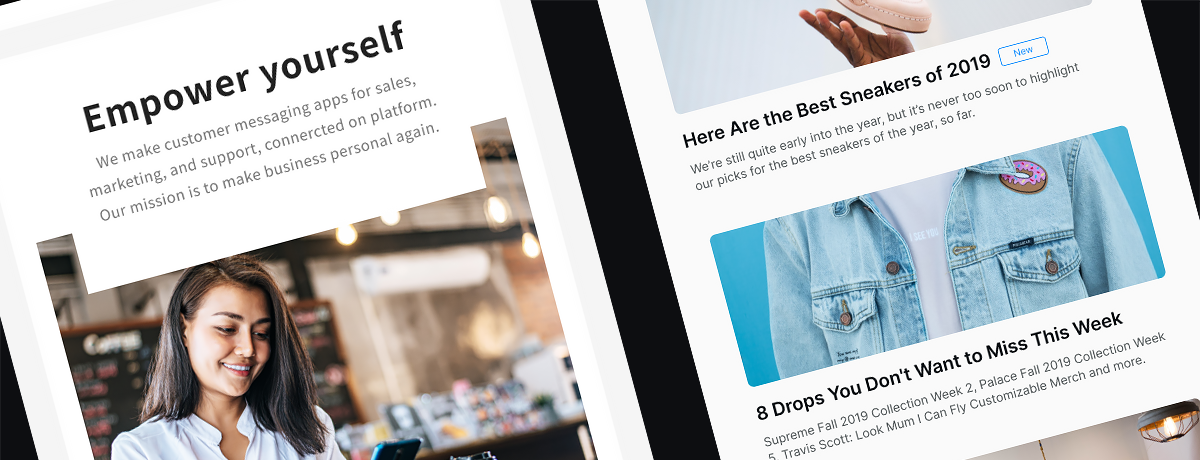
Welcome emails and newsletters are a great way to provide customers with insightful and promotional content.
10. Gated, Personalized Offers
What it is: Offering an exclusive discount to customers based on their life stage (think students and seniors), occupation (like healthcare workers), or affiliation (such as the military or professional organization membership)
What it can do for your brand: Acquire new customers, improve customer satisfaction and retention, and strengthen customer relationships
When it’s not a good fit: If you can’t use a digital verification platform to instantly and securely confirm a customer’s eligibility, you risk creating a poor user experience and inviting discount abuse, which can lower your ROI.
Pro tip: Use an identity verification platform like SheerID to deliver a positive, digital-first experience and collect valuable customer data
Examples: Student discounts, military discounts, teacher discounts, healthcare worker discounts
How to Use Identity Marketing to Elevate Your Marketing Tactics
Gated personalized offers are an element of identity marketing, a powerful marketing and advertising tactic brands can use to build meaningful connections with customers.
In an identity marketing campaign, brands offer a VIP deal to customers who belong to specific consumer communities—like an exclusive discount on a streaming music service for students, or on comfortable shoes for nurses who spend all day on their feet. By targeting consumer communities that naturally align with their products or services, brands can increase loyalty and satisfaction within those valuable groups.
Leading brands like Nike, Spotify, and Target use SheerID’s Identity Marketing Platform to collect minimal, privacy-friendly information and digitally verify that customers are eligible for these exclusive discounts. Confirming eligibility for an offer helps prevent discount abuse while providing brands with zero-party data for ongoing engagement. With SheerID, companies can set up and launch an identity marketing campaign within a week.
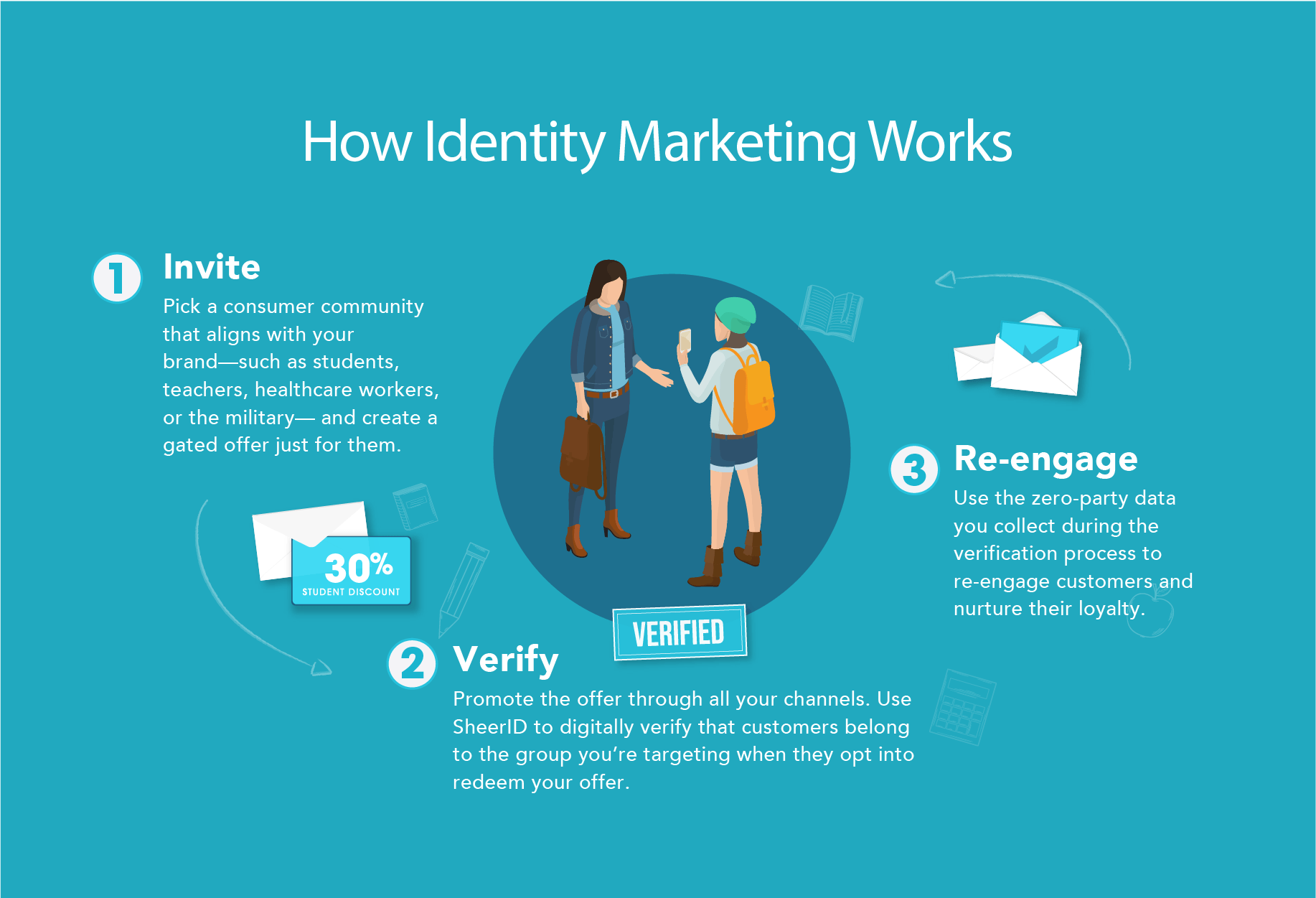
Brands can combine gated, personalized offers with many other marketing tactics to promote their identity marketing campaign across channels. For example, Headspace emailed their current members and encouraged them to “tell a teacher” about their new gated, personalized offer for educators.
And with digital verification, brands gain access—and retain control—of their customers’ zero-party data, helping them execute across communication tactics like email, retargeting, and social media more effectively.
If your marketing goals include driving sales and acquiring new customers, gated, personalized offers could be an incredible tactic. Comcast launched a student offer that increased subscriptions by 91% and conversions by 6x , and ASICS saw their frontline worker discount drive 26,000 purchases in the first 25 days.
As direct-to-consumer mattress brand Tuft & Needle said, “Our industry is flooded with marketing and sales tactics that can overwhelm shoppers. Honoring first responders is a mission-driven approach that helps us rise above the noise.”


